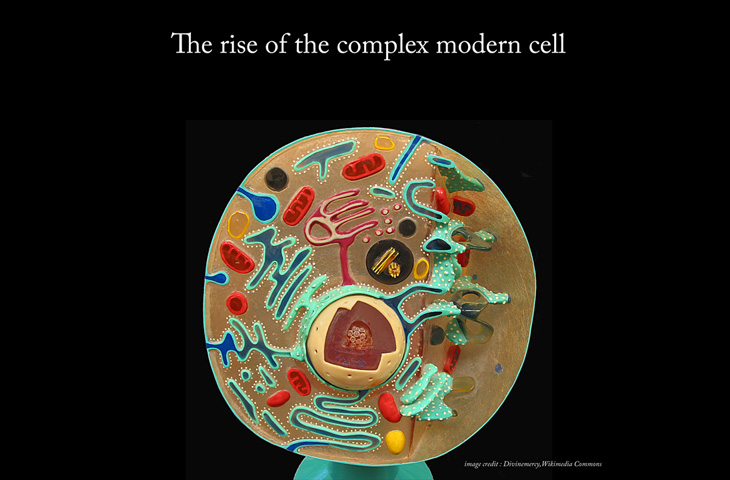Complex modern cells - the ones that you and I are made up of - may be the result of a long-drawn courtship, rather than a hasty marriage between two types of structurally simple cells.
Every modern eukaryotic cell is distinct from prokaryotic cells in two striking ways. One, eukaryotes possess mitochondria or 'powerhouses' that generate energy, and two, every eukaryotic cell is elaborately divided into dynamic compartments with distinct functions. The origin of these compartments has been a source of intense debate.
In the 1960s, biologist Lynn Margulis argued that many of these compartments, including mitochondria, evolved when single-celled host microorganisms engulfed other bacteria and both began living symbiotically, one within the other.
But who were these hosts? The discovery of Lokiarchaeota near the boiling undersea vents off Norway provided another piece to the puzzle. Nicknamed 'Loki', this organism is an archaeon - molecularly different from but similar in size and organisation to bacteria. Loki, startlingly, is the closest extant relative to eukaryotes discovered till now. Scientists currently agree that present-day eukaryotic cells arose from ancestral Loki-like archaea, which somehow engulfed the bacteria that eventually became mitochondria.
However, the mechanism of this union remained a mystery. Most biology textbooks would lead one to imagine that a bacterium entered an archaean, and a eukaryote was born in a single momentous event. But this may not be so.
Mukund Thattai from the National Centre for Biological Sciences (NCBS) and his colleagues, Buzz Baum and Gautam Dey of University College London believe that the bacteria-archaea merger was the result of a slow genesis process - akin to an extended courtship, rather than an impetuous union.
While combing Loki's DNA for eukaryote-like proteins, Thattai and colleagues discovered codes for 'small GTPases', proteins that are extremely common in eukaryotes. Eukaryotes use small GTPases as 'addresses' to regulate traffic in their highly organised compartment systems. But though Loki has GTPases, what it lacks are genes to build the anchors that attach these proteins to membranes for a functional compartment system. So where did the modern eukaryotes obtain their machinery to build membrane anchors?
Interestingly, bacteria have genes to produce such anchors. This suggests that billions of years ago Lokiarchaeota's ancestor began interacting with bacteria, eventually acquiring these anchors, giving rise to the complex organisation of compartments we see in today's eukaryotes.
However, this is unlikely to have happened all in one go. "Evolution doesn't proceed in that manner," said Thattai. "It's much more likely that this process happened if the bacteria and the archaea were in close contact, for hundreds of millions of years," he added.
The weakest link in the study is that the hypothesis is based on only one Loki archaeon. Sandeep Krishna, a faculty member at NCBS uninvolved in this study said, "You have to remember that in the end, the result was about one archaeon," Krishna, however, applauds the work as an exciting step in further understanding the early origins and evolution of life on earth.
The author acknowledges the instructors and participants of the 6th Annual Science Journalism Workshop for the idea behind the story and the very valuable inputs on its construction and flow. The piece is based on a talk given by Mukund Thattai during the workshop, and the paper "On the Archaeal Origins of Eukaryotes and the Challenges of Inferring Phenotype from Genotype" published in the journal Trends in Cell Biology. The article can be accessed here.









0 Comments